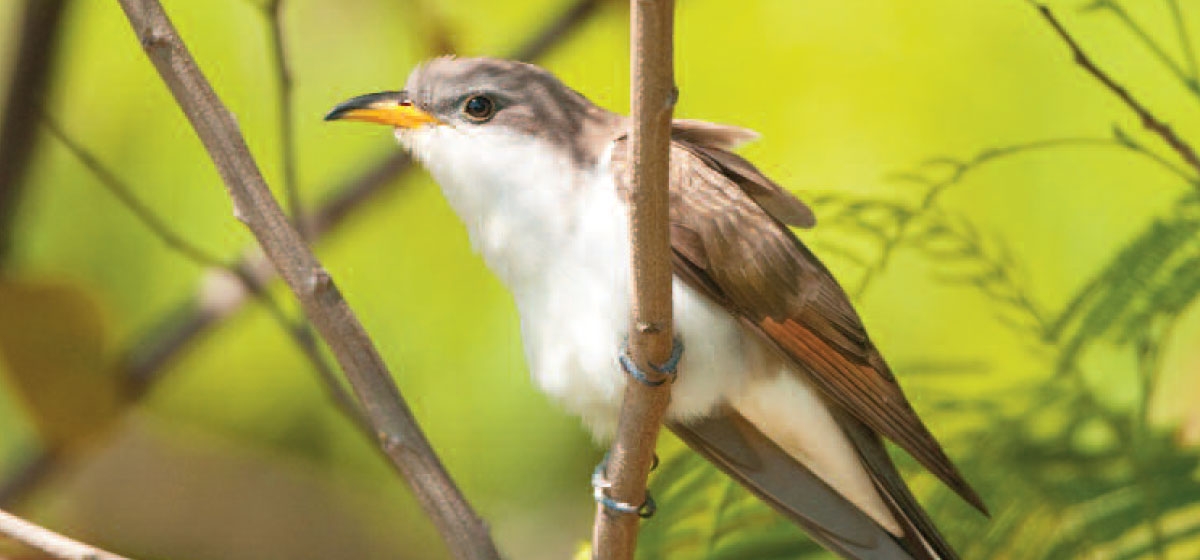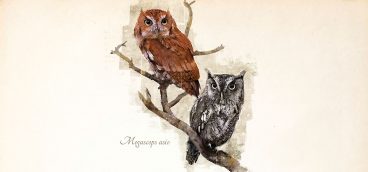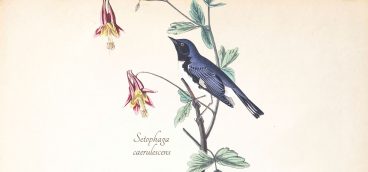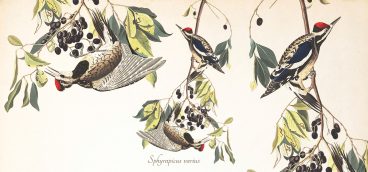
Pittsburgh is a city of neighborhoods, and the patchwork-quilt variety of them gives everyone a place to call home and a sense of identity to go with it. We say Shadyside, Bloomfield or the South Side, Fox Chapel, the Strip or Swissvale, and certain images, people and lifestyles come to mind. Each place is a microcosm of the society around it, an ecosystem with certain riches and certain limitations. So it is for the world of birds.
Take the yellow-billed cuckoo, and its close relation, the black-billed cuckoo. If you didn’t call them neighbor or know where they lived, you might never see them. They won’t be found at your feeder or scraping the lawn for morsels. They’re typically high-rise dwellers, living up in the penthouse of trees above our heads, furtively spending their days far above us. But like our neighbors in corners of Pittsburgh we might not visit, they are there, and with a bit of effort and care, we can get to know them.
This time of year, cuckoos have returned from wintering grounds as far south as Argentina to take advantage of the abundance of a western Pennsylvania summer. While omnivorous and willing to look from thickets to treetops for a meal, cuckoos favor caterpillars: tent caterpillars, hairy caterpillars, most any kind of little creepy crawler. Cuckoo trivia: They can’t digest the caterpillar hairs, but instead collect them into a pellet in their stomachs, which they cough up, much as an owl coughs up a pellet of fur and bones.
My best looks at yellow-billed cuckoos came one June day at Beechwood Farms and another warm day at Harrison Hills Park high above the Allegheny. What’s nice about both spots is the ability to see birds at eye level as they explore the forest canopy. At Beechwood, there happened to be an infestation of tent caterpillars that summer. Unsightly, maybe, but the silken tents and their protein larders were like baskets of picnic sandwiches for the birds. Imagine you’re a cuckoo shyly poking around for a meal. You see a white, webby bag of caterpillars. Easy pickings!
That day at Beechwood, I stood at the end of the Tree Top overlook, a railed wooden platform built into a hillside off the Upper Fields trail, and watched as a cuckoo poked into a tent grabbing larva after larva. The bird was slender, grayish brown across its back, downy white on the chest and belly. Its decurved bill was glossy black on top and yellow underneath, and the bird’s tail was narrow and spotted, alternating white and dark splotches, very fashionable. Eventually, it flew off. This time of year— breeding season—the cuckoo might return to its small, twiggy platform nest. Males and females build the nest, incubate eggs, and together feed the young, who learn from their parents to hop from branch to branch and eventually fly. The young also hear their parents’ call, a rapid series of notes, ka ka ka ka ka, then more extended, kowp, kowp, kowp. Distant relatives of the Old World cuckoos of Swiss clock fame, Pennsylvania cuckoos share the onomatopoeic moniker but not the crazy cuckoo, cuckoo call, probably a good thing since that bioacoustic blast might indeed push us to our wits’ end. Our cuckoos have numbers that rise and fall with the abundance of caterpillars, but pairs are regularly found each summer. Recent volunteer data collection indicates healthy cuckoo breeding populations statewide, with the black-billed in the more dense forests of northern and central Pennsylvania, and the yellow- billed spread throughout the commonwealth.





